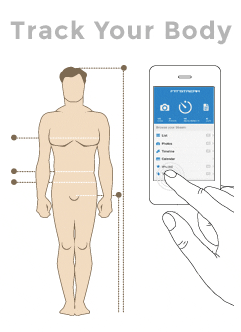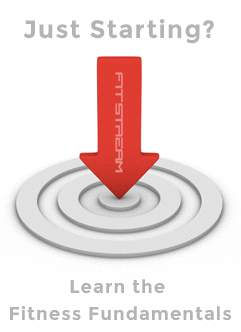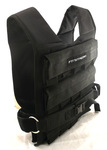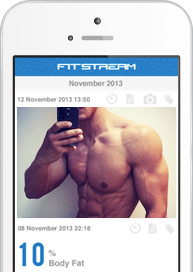
We explore why you should keep a health and fitness journal and how you can use it to transform your life.
“What gets measured, gets managed”
Anonymous
What is a health journal?
A health and fitness journal is simply a place where you regularly record information about your body, mind, activity and general wellbeing.
Your journal becomes a place to;
- Remember your activity and statistics from a past time (a memoir)
- Appreciate where you are now (a gratitude)
- Decide where you’re going (a goal)
- Determine how best to get there (a plan)
Not only will your journal give you clarity and purpose but it will also offer a place for reflection and self-discovery.
Who should keep a fitness journal?
Journalling is particularly popular with bodybuilders, professional weight lifters, fitness models and powerlifters but everyone can benefit from simple record keeping and progress tracking. It's a great way to create an awareness of your body and actions.
If there’s something that you want to change about your body (be it losing weight, building muscle, or even a health issue) a journal will help you track, plan and achieve your goal.
Why keep a health journal?
Making time to journal your progress can be difficult as everyday life gets in the way, but the payoff for investing this time can be significant. After a short period of record keeping, your journal will become a great source of clarity for you and offer up ideas, direction and purpose to your health and fitness training.
Some of the main incentives to keep a journal are to monitor progress, build motivation, and enable you to refine your lifestyle so it’s optimally tailored to meet your health and fitness goals.
There are so many different elements that interact to create your current health and physique; how you exercise, the frequency and intensity of training, duration of workouts, diet, sleep, mood, supplementation… the list goes on and it’s difficult to make sense of it all. Building a personal health journal will change that. You can run experiments on yourself, track your results and craft a lifestyle that is unique to you and what you're trying to achieve.
A common reason that people fail to build the body they want is because they don’t track their progress, use non-targeted training methods that aren’t in sync with their goals, and ultimately they end up giving up too soon because they don’t see the desired results.
A journal will give you focus and illustrate just how your current methods are affecting you. Organizing your metrics and experiences into a narrative transforms the random thoughts that clutter the mind, bringing them to the fore to form meaningful insights. It’s this information that you can use to build a lifestyle that transforms your body and pushes you towards your goals.
It helps to see your journaling as a way to bring clarity to your life and organize the stuff floating around your brain into a valuable health resource and timeline of your physical body.
Here are some other benefits to keeping an online fitness journal;
- Clearly see what progress you’re making and how your body is changing
- Encourage formation of healthy habits
- Track progress towards goals
- Build a record of personal bests and give you targets to aim for
- Able to run ‘health experiments’ and create a tailored lifestyle for you and your goals
- Develop an excellent source of personal motivation
- Inspire others to lead a healthier lifestyle by publishing your progress (check out our Live Stream)
How to record journal entries
There are two main ways to keep your health and fitness journals; physically, using pen and paper, or digitally, using an online fitness journal and app.
Much of the decision is down to personal preference although there are many benefits to recording your logs digitally, which we explore in our article how to track your fitness.
Regardless of the medium, the process is largely the same;
- Record the date of the journal entry
- Add the journal entry itself. This could be;
- Free text
- Body Measurement or metric
- A progress picture
- Add tags
Tagging your journal entries (for example #meal #personalbest) makes it much easier to filter your logs and find exactly what you’re looking for, or to compare similar items together at one time.
What to record in a fitness journal
There are hundreds of health and fitness markers you could be tracking, but you should keep records focused on those relevant for your goals. If your logs become too time consuming you’re more likely to lose interest and stop altogether. Luckily, the explosion in the health and fitness technology industry means that collecting your data is easier than ever before (there are smart scales, watches, and fitness bands that all collect data automatically).
Here’s a list of the most common fitness metrics to track;
- Bodyweight
- Body fat
- Body measurements (e.g. waist, bicep, chest, thigh sizes)
- Food intake / calories
- Blood pressure
- Workouts and training method
- Mood
- Sleep duration and quality
A more comprehensive list of metrics can be found in our article how to track fitness.
You can also try recording some of the following information to add value to your journal;
- Progress pictures to capture visual changes in the body
- Old family photographs of yourself through the ages
- Recipes
- Magazine articles / blog posts and snippets from books
- Inspirational quotes
- Goals and targets to aim for
- Photographs of physiques you aspire towards
- Gratitude entries (see keeping a gratitude journal)
- Memo’s of praise you’ve received
- Your fitness goals and targets
- Workouts (exercises, weight used, reps and sets)
- Personal bests and records
- Measurements: weight, waist etc
- Diet notes
For more ideas on things you can record, take a look at our journal inspiration article.
Journaling Tips
To get the most out of your health journaling, here are our tips;
- Try to write journal entries daily, recording thoughts on your workout or any general feelings and moods that will help give insight into your state of mind
- Record body measurements weekly (see our article on how to measure the body, track bodyweight, and record body fat %)
- Setting a reminder can be a useful way of ensuring your don’t miss a record and you build a habit of journaling
- Create a routine of logging for 5 to 10 minutes at the same time each day (we recommend just before going to bed as it’s a great way of collecting your thoughts on the day)
- Be honest!
If you follow our guide, in two months time you will have a journal that’s filled with memories, measurements, self-reflection, appreciation, ideas, photos, experiments, achievements, goals and personal bests.
This valuable information can be used to help transform your body and build a lifestyle that pushes you towards your goals as quickly as possible.
The Fitstream Health and Fitness Journal is now available to download for free on Android and iOS. Join our worldwide community to help accelerate your transformation.











